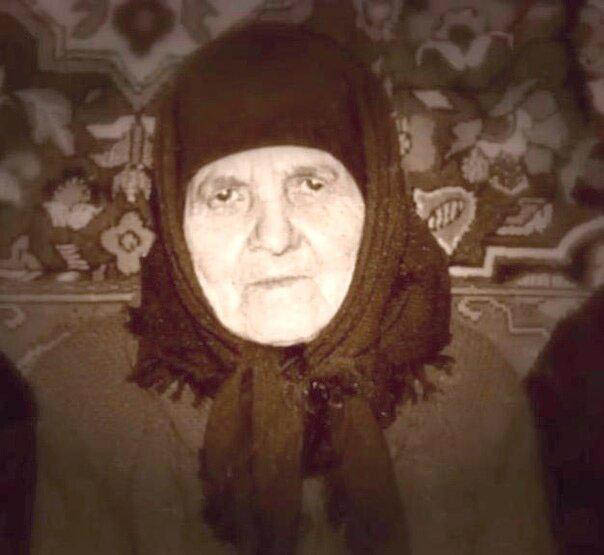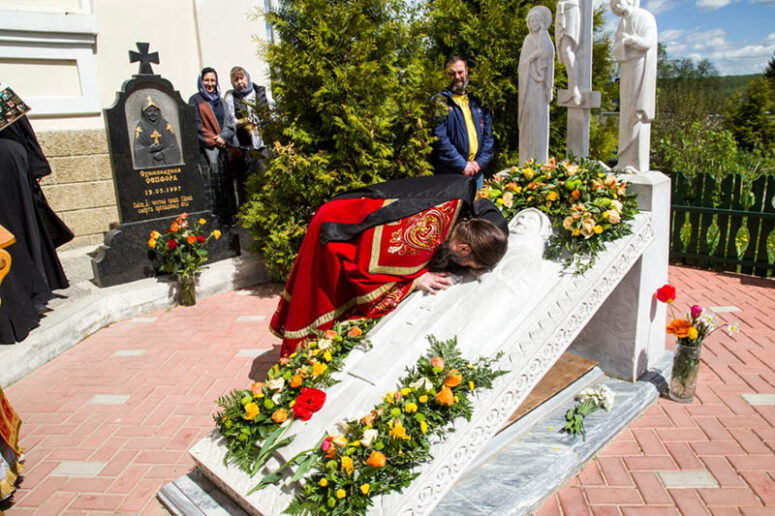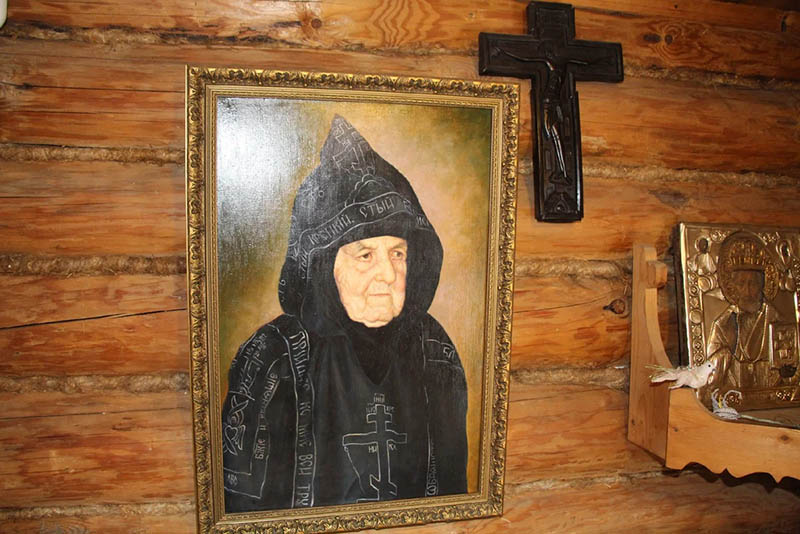
It is amazing how the Lord uses saints with their different destinies, special gifts and unique experience of the Christian knowledge to reveal to us something new about Himself and the invisible world. As a maiden, Daria wanted to enter a monastery, but her mother’s blessing was for her to get married. What is more pleasing to God? The answer is simple: he who follows the Commandments will always make the right choice: a humble and obedient person will certainly receive from the Lord that which he desires and even more. Her simple instructions have become treasures of spiritual wisdom, while the miracles happening through her prayers are a manifestation of her great love for neighbor.
Humble Life before Monasticism
Daria Shnyakina (mother Sepphora’s name before tonsure) was born on March 19, 1896 into a pious peasant family in the outback of Russia, precisely the village of Glukhovo, Nizhny Novgorod region. Despite being poor and illiterate, her parents were honest and hardworking people.
In the girl’s family line on both sides, there were several monks and nuns. Daria grew up in a spirit of piety and love of prayer, work and worship. Amusements and empty talk were alien to her; she strictly observed fasts and often secluded herself to remain alone with God. Together with her family, Daria often visited the nearby Convent of the Intercession of the Most Holy Theotokos, located near Glukhovo, where she worked and communicated with the nuns. The sisters taught her handicrafts and the Jesus Prayer, which they prayed while working.
From a young age, Daria wanted to devote her life to God. In 1916, her father suddenly died. When a young fellow villager Dmitry, a believer belonging to a wealthy family, wooed the 20-year-old girl, her mother, barely managing to feed her family, blessed her for the marriage. Daria showed obedience and accepted that as the will of God. As the eldest daughter-in-law, she became the housekeeper in her husband’s large house. “I had no time to take off my bast shoes, let alone rest,” she later recalled. However, the Lord gave her strength, because she never forgot about Him. Daria was doing a great job, and everyone was happy with her. Together with her husband, they had four daughters.
In 1933, Daria and her family had to endure terrible trials associated with the dispossession of the so-called “kulaks”. (T/N https://en.wikipedia.org/wiki/Dekulakization) Many of her relatives were killed, her husband’s parents were exiled to Solovki, and the house was dismantled into logs, while Daria and her children found themselves on the street. Husband Dmitry survived only because he had gone to work in a neighboring city of Bolokhovo shortly before the events. Eventually he was able to reunite with his wife and daughters. After that, the family spent a long time living in cramped conditions and incessant labors.
In 1946, after the death of her husband, Daria with her children moved to Kireevsk, a small town in the Tula region. There she left behind all earthly cares with her adult daughters, happy to satisfy her modest needs.

Once, during a solitary prayer, Daria suddenly saw angels walking around her, dressing her in monastic clothes. Soon, she went to the Holy Trinity Sergius Lavra and spoke about her amazing vision at confession. There she received a blessing to be tonsured, and on October 20, 1967, the nun Dosithea was born. In December 1989, she was tonsured into the great schema with the name Sepphora.
All her life nun Sepphora wanted to belong to a monastery. She was worried that even as a schema-nun she would die outside monastic walls. For a long time she prayed to the Mother of God until one night, the Most Pure Lady appeared to her in a dream and said, “You will die in a monastery in Klykovo town.” Nun Sepphora did not know anything about such a town, but the Mother of God said, “You do not need to know this. The time will come, and the priests will come for you.” And so it happened.
In 1995, the future abbot Mikhail engaged in the construction of the monastery of the Savior Not Made by Hands in the village of Klykovo visited Eldress Sepphora. Hearing about Klykovo, she was delighted. By Christmas 1996, the Eldress settled in the Spassky Monastery, where she spent the last 18 months of her earthly life.
Fountain of Spiritual Wisdom
In her monastic years, Mother Sepphora provided spiritual guidance for many people, showing an example of piety, comforting those in sorrows, healing and leading her flock to salvation.
People often came to the Eldress for advice in family matters. She received everybody and taught that children should not be scolded and that they are like raw wax that could be used to sculpt anything. She said that when children commit offences or disobey, their mothers should pray that the Lord would mercifully lead them on a good path. The Eldress also opposed the modern tendency of women dominating in family life. She used to say, “If your man comes home drunk, do not argue. Tell him to lie down and have some rest. If he is hungry, feed him. Treat him kindly. Then everything will be peaceful. The Holy Scripture says, “… A wife should respect her husband”. There is no need to tremble, but to respect. What did Sarah call her husband? ‘My lord!'” Lives of many families have improved thanks to nun Sepphora’s advice.
The Eldress taught people the Jesus prayer in the same way as the Glukhovo nuns once taught her. “Here, when you dig your garden bed, push the spade and say, ‘Lord Jesus Christ, Son of God…’ – and then you pull it back and say, ‘…Have mercy on me, a sinner’”. In her youth, Mother Sepphora did not have time to pray for hours in front of the icons, so she read the Jesus Prayer always and everywhere.
The Eldress always taught her spiritual children to turn to the saints more often. She used to say, “If you have five icons hanging in your house, then learn the troparion and the life of each saint. Icons are not an exhibition of paintings. You need to pray before them, you need to know the troparia and offer prayers to the saints depicted on them. At first it may be difficult to remember the troparion, then learn at least the refrains from the akathist.” She said that the Holy Scriptures are revealed in the troparia and the images of saints, and that we always need to direct our spirit towards the heavenly world.
Nun Sepphora often said that entering a church, one must reverently stand before God, be sure to know the Divine Liturgy and avoid walking from icon to icon lighting candles after the service has already begun.

Personal Example above All
The schema-nun was very strict at observing fasts, but she kept it a secret. On the day before Communion, she ate only prosphora. During Holy Week, she refrained from food, only drinking cold tea. Only those closest to her saw her ascetic deeds. The Eldress never encouraged others to follow her example, although she did say, “abundant food does not bring us closer to God“. Mother Sepphora had her own small cup, from which she ate one hot spoonful. She loved salted fish and would sometimes enjoy having a piece and drinking some tea. She did not like sweets, but collected candies and cookies (which she called “trifles”) for her visitors. The Eldress sometimes treated ill people to some of these sweets and restored them to health.
She was so strong in prayer that, almost completely losing her physical sight, she saw with her inner eye much that was happening both in the earthly world and even in the angelic one. Demons attacked mother Sepphora more than once, sprinkling sand in her cell, stealing her prayer rope or even beating her. To her frightened and astonished spiritual children she would say, “Why are you surprised? Of course, they attack. I am disturbing them.” The Eldress often taught that the sign of the cross is the first and foremost defence against evil spirits. She herself made it very articulately. She said that demons laugh if we casually cross ourselves, not folding our fingers appropriately, or neglecting to bring them to our forehead or stomach.

The Fruit of Prayer and the Spirit
For her deeds, the Lord blessed the schema nun Sepphora with many gifts. Her prayer healed people, while in her spirit she could see the fate of a person and what was happening at a long distance. She often prophesied about the future.
The Eldress loved the Optina Hermitage very much. Living in Klykovo, she often came there for services. During her first visit to Optina, in the wasteland she saw with her spiritual eyes the magnificent Vladimir Church, restored after her death.
One morning on the feast day of St. Sergius of Radonezh, mother Sepphora told her cell attendant Panteleimona about a wonderful dream: “Oh, what a dream I had today! There was such a solemn service in the Lavra, you would have loved it…” On the following day, the Eldress’ spiritual child, nun Alexandra, asked Panteleimona why they had left the festive service in the Lavra without waiting for her. Panteleimona began to assure her that they were not at the service, but Alexandra claimed to have seen the Schema-nun face to face. Eventually the sisters realized that the Lord granted the Eldress the ability to travel in the spirit to any distance.
The Schema-nun foresaw her own death. She had a vision of the three murdered Optina brothers — Hieromonk Vasily and monks Ferapont and Trophim. Mother Sepphora told her spiritual child that they had come to remind her their names so that she would pray for them. However, the Eldress knew that her memory of the names was excellent, and the holy martyrs came to greet her in the heavenly abode.
Schema-nun Sepphora reposed on May 13, 1997. To this day, she continues to pray for those living on earth. This is evidenced by the many miracles that occur at her grave.





